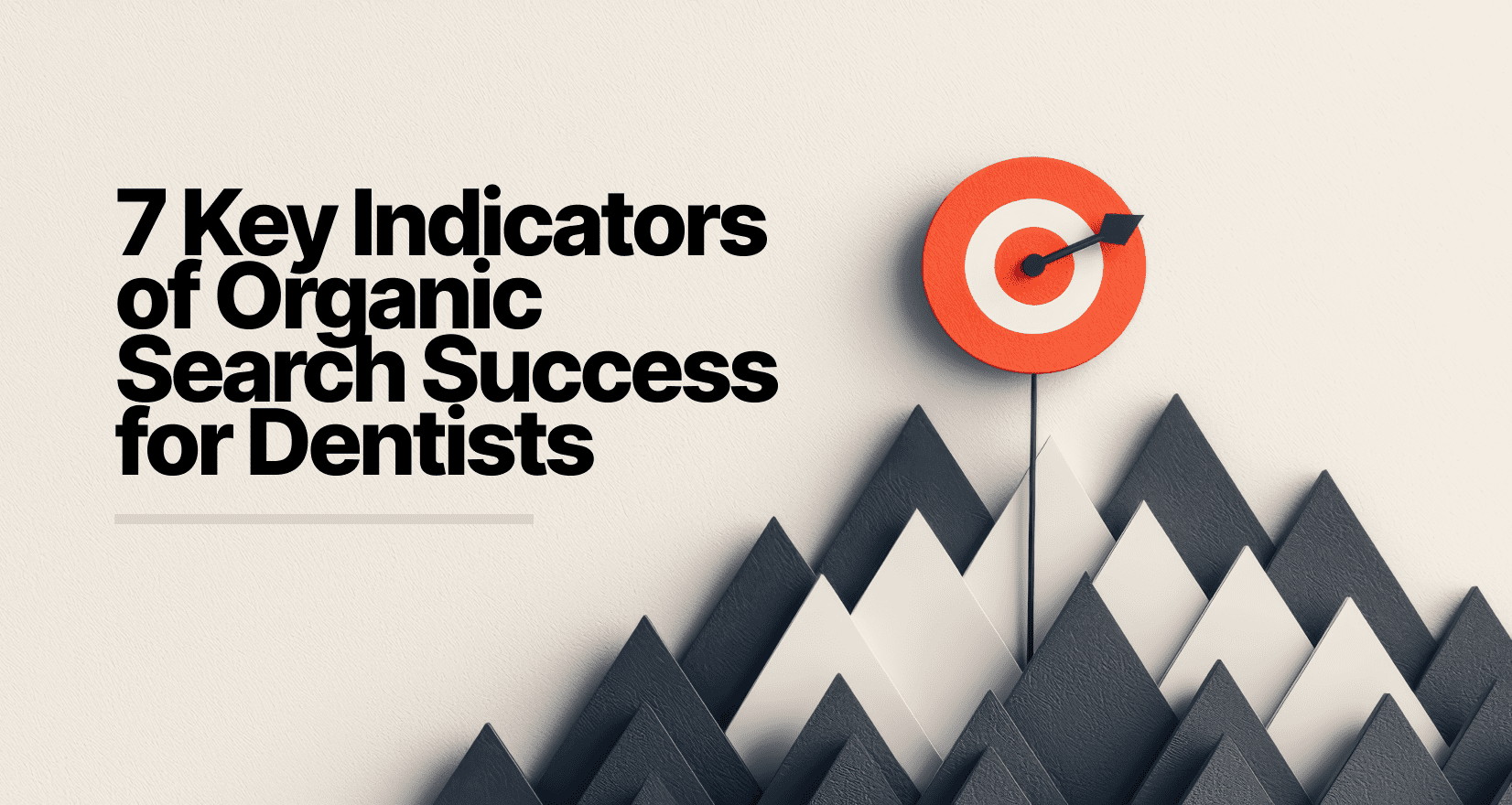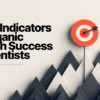The Two AIs Transforming Your Dental Practice
“Artificial intelligence” might seem like a nebulous term used to describe a seemingly unending parade of new technologies, and no one could blame you for lumping all that shiny robot-spawn together. But when AI entered the dental industry, it didn’t arrive as one unified technology, whether for communication or diagnostic AI. Instead, two fundamentally different types of AI are reshaping how practices operate, diagnose, and communicate with patients. Understanding the distinction between these technologies isn’t just academic curiosity. More and more, it’s becoming essential knowledge for making informed decisions about which AI tools to adopt and, more critically, which questions to ask vendors before signing contracts that could lock you into one of those newfangled programs.
In the latest episode of the Byte Sized Podcast, Adrian Lefler brought together two experts from opposite sides of the AI implementation spectrum: Dr. Leland Wilhoite, a 29-year practice veteran who now oversees AI adoption across P1 Dental Partners‘ 60+ locations, and Wayne Renbjor, a software development expert with 25 years of enterprise experience who specializes in AI implementation. Their conversation revealed not just how these technologies work and why dentists need to understand the difference before their next software purchase.
The Tale of Two AIs: Pixels vs. Language
Without putting you to sleep, the fundamental split in dental AI comes down to what the technology is analyzing. On one side, diagnostic AI tools like Vidya AI, Pearl, and Overjet examine X-ray images pixel by pixel, using traditional machine learning to identify cavities, bone loss, and other pathologies. On the other side, conversational tools like Annie AI use large language models (LLMs) to handle patient communications, scheduling, and front-office tasks.
Wayne Renbjor explained the distinction with surprising clarity: diagnostic AI imaging tools are essentially “big fancy calculators” that have been trained on tens of thousands of X-ray images to recognize patterns. When these systems analyze an X-ray, they’re comparing pixel densities and color variations against massive databases of known pathologies. The AI can detect subtle variations in those 500 shades of gray that human eyes might miss due to our measly human powers of perception. So, diagnostic AI is catching problems earlier and more consistently than traditional visual examination alone. Neat.
Large language models work with tokens, essentially breaking down words and concepts into mathematical relationships. When a patient texts your practice at 2 AM asking about tooth pain, an LLM-based system like My Social Practice’s Annie AI doesn’t analyze pixels; it processes language patterns to understand intent and generate appropriate responses. These systems have been trained on vast amounts of text to understand context and produce human-like conversations minus the human-like impatience during the afternoon slump.
These two types of artificial intelligence work together, hand-in-hand, to propel your practice into the future.
How Vidya AI Changes the Diagnostic Conversation
Dr. Wilhoite’s experience implementing Vidya AI across P1 Dental Partners provides a window into how diagnostic AI transforms patient interactions. Gone are the days of holding up a tiny X-ray on a light box and pointing at shadows the patient can’t see. Instead, the AI overlays colors on digital X-rays displayed on large screens: red for areas of concern, yellow for watch zones, green for healthy tissue.
“For the patients to see it, that’s been huge,” Dr. Wilhoite explained. The visual clarity transforms patient education from an act of faith (“trust me bro, there’s a cavity there”) to a collaborative discussion about clearly visible problems. Studies show practices using diagnostic AI experience higher case acceptance rates because patients can actually see and understand what needs treatment.
But Dr. Wilhoite offered an important caveat: these systems aren’t infallible. The AI struggles with image peripheries where X-ray quality degrades, and factors like angle and equipment quality still matter. “You can’t rely on these to fix all your problems,” he noted. The technology augments clinical judgment rather than replacing it, a theme that emerges repeatedly throughout real conversations about AI implementation. (Phew!)
The standardization benefits particularly excite Dr. Wilhoite in his DSO role. As he pointed out, patients currently “can go to 10 different dentists and get 10 different opinions.” AI diagnostic tools help reduce this variability by providing consistent baseline assessments across all practices in a network. This standardization doesn’t eliminate clinical judgment but ensures all providers start from the same objective foundation.
The Technical Architecture Behind Your AI Tools
For practices evaluating AI solutions, understanding the basic architecture helps explain why certain tools excel at specific tasks while struggling with others. Wayne Renbjor’s technical breakdown, while complex, revealed crucial insights about AI limitations and capabilities.
In a nutshell, traditional machine learning (used in diagnostic AI tools) works with actual mathematical algorithms comparing specific data points – in this case, pixel values. These systems are relatively predictable and less prone to the “hallucinations” that plague conversational AI and lead to bizarre news stories. When Vidya AI identifies a cavity, it’s making a calculation based on pixel densities, not guessing based on human-provided context.
Large language models operate differently, using something called tokenization to break down language into mathematical representations. They predict the most likely next word or phrase based on patterns learned from massive text databases. This approach enables remarkably human-like conversations but also introduces unpredictability. An LLM might occasionally generate plausible-sounding but incorrect information, a phenomenon known as hallucination.
The emerging technical landscape includes protocols like MCP (Model Context Protocol) and A2A (Agent to Agent), which will allow different AI systems to communicate with each other. Imagine Annie AI automatically consulting with your billing system, which then coordinates with insurance verification tools, all without human intervention. These integrations are coming, but they also introduce new complexity and potential failure points.
The Security Question Nobody’s Asking Until It’s Too Late
Now, the less than fun stuff: recent lawsuits against major DSOs. Heartland Dental faces a class action suit related to the Federal Wiretapping Act, stemming from how their phone system vendor allegedly used patient conversations to train AI models. Aspen Dental recently settled a $19 million lawsuit related to software issues. These aren’t small practices making rookie mistakes – they’re sophisticated organizations with legal teams and compliance officers.
Wayne Renbjor’s advice cut straight to the heart of the matter: “What am I more likely going to be in danger of?” His first questions for any AI vendor focus on data security, HIPAA compliance, and ownership of patient information. These aren’t hypothetical concerns. Every state has different regulations about recording conversations. What’s legal in New York might trigger lawsuits in California.
Dr. Wilhoite added another layer of complexity: practices now need patients to explicitly consent to AI involvement in their care. This requirement must be added to privacy practice documents, creating yet another administrative burden. But the alternative – discovering after a breach that your vendor was using patient data to train their AI – could be catastrophic.
The most chilling observation came from Renbjor: “It makes sense that it would go be used to train another AI model, right? I mean, that’s how it works. But you can’t do that with patient healthcare.” Yet there’s no clear legal precedent establishing these boundaries. Practices are operating in a regulatory gray zone where the technology has outpaced the law.
![[Byte Sized Podcast Ep. 17] How Diagnostic AI Actually Works (And Why It Matters) with Dr. Leland Wilhoite & Wayne Renbjor - diagnostic AI - My Social Practice - Social Media Marketing for Dental & Dental Specialty Practices diagnostic AI](https://mysocialpractice.com/wp-content/uploads/2025/10/1-x-1-–-social-post–17-500x500.png)
The Integration Challenge: When Old Meets New
A critical but often overlooked aspect of AI adoption involves integration with existing practice management systems. My Social Practice faces this challenge daily with Annie AI, which must connect seamlessly with various practice management platforms through traditional API integrations. But as Renbjor explained, these connections are constantly evolving.
API deprecation – when software companies update their connection protocols – happens regularly. A system working perfectly today might break tomorrow when your practice management software updates. This isn’t necessarily malicious or incompetent; it’s the nature of evolving technology. But it means practices need to consider not just whether an AI tool works today, but whether the vendor has the resources and commitment to maintain compatibility over time.
The future promises both simplification and complexity. Emerging protocols like MCP will eventually allow AI systems to adapt more dynamically to API changes, potentially reducing the frequency of integration failures. But they also create new potential failure points and security vulnerabilities. As Renbjor noted, every additional connection point is another potential attack vector for data thieves.
Looking Ahead: The AGI Question and Dental Practice Reality
The conversation touched on artificial general intelligence (AGI), which is the hypothetical future AI that could think and reason like humans. You know, like all those movies with happy endings where humanity exists in a futuristic utopia and nothing bad happens at all. While tech giants pour billions into pursuing AGI, Renbjor expressed skepticism about the current approach of simply adding more parameters and computing power. He predicts the future will involve specialized AI models working together rather than one massive artificial brain.
For dental practices, this distinction matters. The trend toward specialized tools means practices will likely adopt multiple AI solutions for different functions rather than waiting for one all-encompassing system. This modular approach allows practices to choose best-in-class solutions for specific needs: diagnostic AI for radiographs, conversational AI for patient communication, specialized tools for insurance verification or treatment planning.
The nuclear bomb analogy Renbjor used is particularly apt. Like nuclear technology, AI offers tremendous benefits – cleaner energy, medical advances, improved efficiency – while also introducing new risks. The practices that thrive will be those that harness AI’s benefits while carefully managing its risks through proper vendor vetting, security measures, and patient consent protocols.
![[Byte Sized Podcast Ep. 17] How Diagnostic AI Actually Works (And Why It Matters) with Dr. Leland Wilhoite & Wayne Renbjor - diagnostic AI - My Social Practice - Social Media Marketing for Dental & Dental Specialty Practices My Social Practice - Social Media Marketing for Dental & Dental Specialty Practices - diagnostic AI](https://mysocialpractice.com/wp-content/uploads/2025/10/1-x-1-–-social-post–17-1-500x500.png)
The Bottom Line for Dental Practices
The two-track nature of AI in dentistry isn’t converging anytime soon. Practices need both types to remain competitive, but they serve fundamentally different purposes and require different evaluation criteria.
For diagnostic AI like Vidya, focus on accuracy, integration with your imaging systems, and educational value for patient communication. For conversational AI like Annie, prioritize natural language processing quality, integration with practice management systems, and data security protocols.
Most critically, don’t wait for perfect solutions or complete regulatory clarity. As Dr. Wilhoite noted, the technology and training are “going very fast now.” Practices that wait for all uncertainty to resolve will find themselves far behind competitors who learned to navigate the current ambiguity.
In This Episode:
Dr. Leland Wilhoite DDS
Dr. Leland Wilhoite has led Wilhoite Family Dental in Indiana since 1996, bringing expertise in implant dentistry and digital technologies while serving on P1 Partners’ AI committee and as an advisory board member for VideaAI. A Northwestern University Dental School graduate and past president of the East Central Dental Society, he combines traditional patient care with cutting-edge innovation to help practices navigate the evolving landscape of dental technology. When not pioneering AI implementation strategies across 60+ practices, he enjoys outdoor activities and spending time with his wife Mary, their three children, and three dogs in Delaware County.
Wayne Renbjor, AI Platform Architect & Lead Engineer
Wayne Renbjor is a software development expert with 25 years of enterprise-level experience at major companies like Comcast and TripAdvisor. As an AI implementation specialist and consultant, Wayne helps businesses understand and adopt artificial intelligence technologies, making him uniquely qualified to explain the technical aspects of AI in dentistry.
Adrian Lefler, CEO and Co-founder of My Social Practice
Adrian Lefler, CEO of My Social Practice, is a seasoned expert in the dental marketing industry with 14 years of experience. He is widely recognized for his engaging and informative presentations. Based in Suncrest, Utah, Adrian shares his life with his wife, four children, and a lively mix of pets. My Social Practice is a leading dental marketing company, and Adrian is passionate about helping dental professionals succeed in this dynamic field.
Frequently Asked Questions
What's the main difference between diagnostic AI and conversational AI in dental practices?
Diagnostic AI tools like Vidya AI, Pearl, and Overjet use traditional machine learning to analyze X-ray images pixel by pixel, comparing them against databases of known pathologies to identify cavities, bone loss, and other issues. These systems work like sophisticated calculators, making mathematical comparisons to detect problems. Conversational AI tools like Annie use large language models (LLMs) that process and generate human language, handling tasks like answering patient questions, scheduling appointments, and managing phone calls. The key distinction is that diagnostic AI analyzes visual data for clinical insights, while conversational AI processes language for communication and administrative tasks.
How reliable are AI diagnostic tools compared to traditional diagnosis methods?
These tools are highly valuable for catching issues that might be missed and providing visual education for patients, but they’re not 100% accurate. The AI performs well in analyzing the central portions of X-rays but struggles with peripheries where image quality degrades. Factors like X-ray angle and equipment quality still significantly impact accuracy. The technology should augment, not replace, clinical judgment. Studies show practices using diagnostic AI achieve higher case acceptance rates, primarily because patients can better visualize and understand problems when they’re highlighted in color rather than trying to interpret traditional grayscale X-rays.
What security and legal concerns should practices consider before implementing AI tools?
The recent lawsuits against Heartland Dental and Aspen Dental highlight critical concerns. Practices must understand who owns patient data processed by AI systems, whether vendors use this data for training their models, and if patients can opt out. State regulations vary significantly regarding conversation recording and data usage. Before implementation, verify the vendor’s HIPAA compliance, data storage security, and documentation of security measures. Additionally, practices must update their privacy practice documents to include patient consent for AI involvement in their care. Ask vendors explicitly about data ownership, storage location (cloud vs. local), and their policies on using patient information for AI training.

![[Byte Sized Podcast Ep. 22] 100% of Dental Practices Will Be Targeted – Here's What Hackers Don't Want You To Know - diagnostic AI - My Social Practice - Social Media Marketing for Dental & Dental Specialty Practices hackers and dental practices](https://mysocialpractice.com/wp-content/uploads/2025/12/byte-sized_ep22.png)

![[Byte Sized Podcast Ep. 17] How Diagnostic AI Actually Works (And Why It Matters) with Dr. Leland Wilhoite & Wayne Renbjor - diagnostic AI - My Social Practice - Social Media Marketing for Dental & Dental Specialty Practices New call-to-action](https://no-cache.hubspot.com/cta/default/1942633/46e5c50e-9172-4068-8104-55f887411530.png)
![[Byte Sized Podcast Ep. 17] How Diagnostic AI Actually Works (And Why It Matters) with Dr. Leland Wilhoite & Wayne Renbjor - diagnostic AI - My Social Practice - Social Media Marketing for Dental & Dental Specialty Practices New call-to-action](https://no-cache.hubspot.com/cta/default/1942633/6df68339-78ab-490f-aa23-019f661f3f5b.png)
![[Byte Sized Podcast Ep. 17] How Diagnostic AI Actually Works (And Why It Matters) with Dr. Leland Wilhoite & Wayne Renbjor - diagnostic AI - My Social Practice - Social Media Marketing for Dental & Dental Specialty Practices New call-to-action](https://no-cache.hubspot.com/cta/default/1942633/fcb69db8-864e-4c0f-81a1-cbff9f879ced.png)
![[Byte Sized Podcast Ep. 17] How Diagnostic AI Actually Works (And Why It Matters) with Dr. Leland Wilhoite & Wayne Renbjor - diagnostic AI - My Social Practice - Social Media Marketing for Dental & Dental Specialty Practices AI problem](https://mysocialpractice.com/wp-content/uploads/2025/09/Mask-group-13.png)
![[Byte Sized Podcast Ep. 17] How Diagnostic AI Actually Works (And Why It Matters) with Dr. Leland Wilhoite & Wayne Renbjor - diagnostic AI - My Social Practice - Social Media Marketing for Dental & Dental Specialty Practices My Social Practice - Social Media Marketing for Dental & Dental Specialty Practices - diagnostic AI](https://mysocialpractice.com/wp-content/uploads/2025/10/Mask-group-21.png)
![[Byte Sized Podcast Ep. 17] How Diagnostic AI Actually Works (And Why It Matters) with Dr. Leland Wilhoite & Wayne Renbjor - diagnostic AI - My Social Practice - Social Media Marketing for Dental & Dental Specialty Practices Dental AI Tools with Adrian Lefler](https://mysocialpractice.com/wp-content/uploads/2024/07/Head-Shot_Adrian_Circle_Large-e1721666265743.png)

![[Byte Sized Podcast Ep. 22] 100% of Dental Practices Will Be Targeted – Here's What Hackers Don't Want You To Know - diagnostic AI - My Social Practice - Social Media Marketing for Dental & Dental Specialty Practices hackers and dental practices](https://mysocialpractice.com/wp-content/uploads/2025/12/byte-sized_ep22-100x100.png)


